Many people have enjoyed learning in Montessori schools.
Some of the famous names include: Anne Frank, the diarist; Gabriel Garcia Marquez, the novelist; Katherine Graham, the former owner-editor of The Washington Post; Lea Salonga, the actress; George Clooney, the actor; Jeff Bezos, the founder of Amazon; Sergey Brin and Larry Page, the co-founders of Google and Jimmy Wales, the founder of Wikipedia.
Many others have supported or taught at such schools. These include: Helen Keller, Alexander Graham Bell, Thomas Edison, Buckminster Fuller, Jean Piaget, the Dalai Lama, Erik Erikson, John Holt and Nigel Kennedy.
Many people say that Montessori education enabled them to be self-starters, think for themselves and continue to develop in their chosen fields.
Explaining the principles behind the Montessori schools, Maria once wrote:
There is a part of a child’s soul that has always been unknown but which must be known.
With a spirit of sacrifice and enthusiasm we must go in search, like those who travel to foreign lands and tear up mountains in their search for hidden gold.
Philosophy and
Background
Maria was an educational pioneer whose belief in children – and child-centered education – spread around the world.
There was a time – during the early part of the 20th Century – when it seemed her approach would be adopted throughout education. Her ideas made a profound impact, but some fell victim to other philosophies and mass schooling.
During the past half century, however, there has been an appreciation of the Montessori approach and what it can do for children. Certainly there have been critics, but the overwhelming reaction has been positive.
(One contributing factor to the criticism has been that there is no protection of the name. Anybody can set-up a school and call it ‘Montessori’.)
You can discover more about her heritage on the web site of the Association Montessori Internationale. This can be found at:
Maria was responsible for developing many concepts now associated with child-centered education. So let’s start by considering her achievements and some aspects of her approach.
She became one of the first women in Italy to qualify and practise as a doctor.
She then switched to education and spent years observing how children developed.
She formulated her ideas, put these into practice and achieved outstanding results with children previously considered ‘idiots’.
She created pioneering schools. She developed unique learning materials that enabled children to learn by using all their senses.
She was the first to introduce school furniture made for children, rather than for adults.
She believed children wanted to learn – seeing play as ‘the work of the child’.
She encouraged children to learn by pursuing their interests. She created the ‘3 hour cycle’ in which children could concentrate on their work for 3 hours.
She believed children had ‘absorbent minds’ that were open to learning specific things at certain stages.
She called these stages ‘planes of development’. She developed strategies for enabling children to master specific skills during these sensitive times.
She saw the educator’s role as encouraging the child to pursue their interests and develop their abilities.
She trained educators to provide an attractive ‘prepared environment’ and enable the child to capitalise on their development at each stage.
She found that pursuing this approach produced excellent results. Children frequently became more self-managing, responsible and committed to lifelong learning.
Philippe Tremblay, an expert on education, described the Montessori approach in the following way.
“Montessori education is a flow experience; it builds on the continuing self-construction of the child – daily, weekly, yearly – for the duration of the programme.
“Montessori schools are divided into multi-age classrooms: parent infant (ages 0 to 3); preschool (ages 3 to 6); lower and upper elementary (ages 6 to 9 and 9 to 12): middle school (ages 12 to 14).
“The prepared environments introduce an uninterrupted series of learning passages, a continuum.
“The ‘prepared environment’ is Maria Montessori’s concept that the environment can be designed to facilitate maximum independent learning and exploration by the child.”
Starting out
Maria was born in Chiaravalle, Ancona, in 1870. Her father, Alessandro, was a civil servant, whilst her mother, Renilde Stoppani, was relatively well-educated and loved reading.
The family moved to Rome in 1875 and Maria showed a great hunger to learn. Rumour suggests that her parents sometimes disagreed about her future, but Renilde was ambitious for her daughter, who showed a great capacity for learning and passing exams.
Maria also emerged as a leader amongst her peers. Ready to break barriers, she enrolled at the Regio Istituto Tecnico Leonardo da Vinci, intending to become an engineer. Moving on, however, she decided to enter medical school and become a doctor.
The Association Montessori Internationale web site set up to celebrate the 100th anniversary of the first Montessori School says:
“Upon graduation Montessori’s parents encouraged her to take up a career in teaching, one of the few occupations open to women at the time, but she was determined to enter medical school and become a doctor.
“Her father opposed this course – medical school was then an all male preserve – and initially Maria was refused entry by the head of school.
“Montessori was undeterred, apparently ending the unsuccessful interview with the professor saying: ‘I know I shall become a doctor.’”
“Eventually it seems that Pope Leo XIII interceded on her behalf and in 1890 Montessori enrolled at the University of Rome to study physics, maths and natural sciences, receiving her diploma two years later.
“This was her passport to the Faculty of Medicine and she became one of the first women to enter medical school in Italy.
“Montessori stood out not just because of her gender, but because she was actually intent on mastering the subject matter.
“She won a series of scholarships at medical school which, together with the money she earned through private tuition, enabled her to pay for most of her medical education.”
“Her time at medical school was not easy. She faced prejudice from her male colleagues and had to work alone on dissections since these were not allowed to be done in mixed classes.
“But she was a dedicated student and on July 10th 1896 she qualified as a doctor. Being one of the first women in Italy to achieve this, she became known across the country.
“She was immediately employed in the San Giovanni Hospital attached to the University.”
Maria also became a surgical assistant and did research work at a psychiatric clinic attached to the University of Rome. There she met a doctor, Giusseppe Montesano, with whom she would later have a romance.
Maria gave birth to their son, Mario, in 1898, but the couple never married. Mario was cared for by a family in the countryside near Rome and, though Maria visited him regularly, it was many years before he knew their true relationship.
Mario later collaborated with Maria and continued his mother’s work after her death.
Influences
Maria began taking a strong interest in working with children in Rome’s asylums. During this time she read everything possible on working with ‘mentally retarded children’.
Two key influences were Jean-Marc Gaspard Itard – famous for working with the ‘wild boy of Aveyron’ – and one of his students, Edouard Seguin.
Both believed in showing respect to each individual – whatever their condition – and also helping people to learn through the senses.
Friedrich Froebel, the inventor of the kindergarten, was another key influence. He encouraged children to learn through play and by using attractive learning materials.
Developing her
own approach
Reading through the material and working with the ‘retarded children’, Maria came to her own revelation. She later wrote in The Montessori Method:
“I felt that mental deficiency presented chiefly a pedagogical, rather than mainly a medical, problem.”
Putting her ideas into practice, she began experimenting with learning materials that stimulated the senses.
The results were startling. The so-called ‘feeble-minded’ children achieved exam results equivalent to those considered ‘normal’.
Maria was beginning to develop her own philosophy. This would be expressed later in the following quotations:
“Our aim is not only to make the child understand, and still less to force him to memorize, but so to touch his imagination as to enthuse him to his innermost core.
“We must not dwell on his limitations but focus on his possibilities.
“The teacher’s task is not to talk, but to prepare and arrange a series of motives for cultural activity in a special environment made for the child.”
“The essential thing is for the task to arouse such an interest that it engages the child’s whole personality.
“Follow the child. These words reveal the child’s inner needs: ‘Help me to do it alone.’
“The child is much more spiritually elevated than is usually supposed. He often suffers, not from too much work, but from work that is unworthy of him.
“It is necessary for the teacher to guide the child without letting him feel her presence too much, so that she may always be ready to supply the desired help, but may never be the obstacle between the child and his experience.”
“The first essential for the child’s development is concentration. The child who concentrates is immensely happy.
“The first dawning of real discipline comes through work. Every action of the teacher can become a call and an invitation to the children.
“The more the capacity to concentrate is developed, the more often the profound tranquility in work is achieved, then the clearer will be the manifestation of discipline within the child.
“Childhood passes from conquest to conquest in a rhythm that constitutes its joy and happiness.
“The word education must not be understood in the sense of teaching but of assisting the psychological development of the child.”
(One key point: the educator in the Montessori approach is known as the ‘Directress/Director’, rather than ‘teacher’.)
Casa dei Bambini
Maria’s work with the ‘idiots’ built her reputation. She was invited to several countries to lecture on issues involving education and social reform.
Then, in 1907, she established the first Children’s House – the Casa dei Bambini. Maria was responding to a call for help.
The Montessori Centenary web site explains that Rome was expanding at the time, but some construction firms were going bankrupt. This left unfinished buildings that were quickly occupied by squatters.
A group of wealthy bankers decided to rescue one development in the San Lorenzo district, however, and re-housed poor working families. This solved several problems, but created another challenge.
Without parental supervision during the day, children roamed the building sites, often causing damage. The developers approached Maria, inviting her to do something with the children. The Centenary site says:
“Montessori grasped the opportunity of working with normal children and, bringing some of the educational materials she had developed. A small opening ceremony was organised but few had any expectations for the project. Montessori felt differently:
‘I had a strange feeling which made me announce emphatically that here was the opening of an undertaking of which the whole world would one day speak.’
“She put many different activities and other materials into the children’s environment but kept only those that engaged them.
“What Montessori came to realise was that children who were placed in an environment where activities were designed to support their natural development had the power to educate themselves.”
Here is a letter written by Maria when opening the school. It says:
“I started my work like a peasant who had put aside good seeds of wheat, and to whom a fertile piece of land had been offered so he could sow it according to his wish. But it was not to be. As soon as I moved the sods of that earth, I found gold, rather than wheat.
“The sods were hiding a precious treasure.”
Spreading
the philosophy
Montessori’s work at the Children’s House proved successful and, in 1908, a third school was opened in Milan, run by Anna Maria Maccheroni.
One year later Maria ran her first training course in the ‘method’ in Citta di Castella. She also wrote her first book – known in English as The Montessori Method – which was eventually translated into 20 languages.
By 1911 her approach had been implemented in countries such as Switzerland, France, England, Argentina and the USA. One year later The Montessori Method was published in America – the first edition of 5,000 selling out in a few days.
Maria ran the First International Training course in 1913. Held in Rome, it was attended by students from Europe, Asia, Australia, South Africa and the USA.
In December of that year she made her first trip to America and the Montessori Educational Association was set up in that country. Founded by Alexander Graham Bell and his wife Mabel, it was backed by people such as Thomas Edison and Helen Keller.
Maria visited the US again in 1915, this time accompanied by her son, Mario. She addressed several conventions and ran training courses.
She also presented a ‘glass house’ school room to the Panama-Pacific International Exhibition in San Francisco. This enabled spectators to observe children learning using her materials and methods.
Moving from
country to country
Over the next three decades Maria moved from country to country. Sometimes this was the result of invitations – such as basing herself in Barcelona, India and the Netherlands. Sometimes it was because of other challenges – such as the Montessori approach being banned in her native country by Mussolini.
The Association Montessori Internationale was founded in 1929 and based in Berlin. The Nazi’s closed all Montessori schools in Germany, however, and the AMI moved to the Netherlands, which Maria also made her base.
At the end of 1939 she and Mario visited India to run a three month training course. Italy entered the Second World War while they were on the sub-continent and Mario was interned, but she was allowed to travel around the country.
Her son was released to honour her 70th birthday, but neither were allowed to leave India until the end of the war.
Maria spent the final years of her life writing books and travelling the world educating teachers. She was also nominated three times for the Nobel Prize, in three consecutive years, 1949, 1950 and 1951.
Her last public engagement was in London in 1951 when she attended the 9th International Montessori Congress.
She died at Noordwijk aan Zee in Holland, aged 81. Beside her was Mario who, together with thousands around the world, continued to practise her philosophy of education.
Principles
What actually happens in a Montessori environment? Imagine you are visiting a class for the youngest children. You will probably see over 30 children – ranging from two and a half to six years old.
The room has a prepared environment in which children can follow their natural tendency to work.
It will embody the characteristics of beauty, simplicity, order, accessibility and reality. Children will have many enticing materials that are designed to help them explore their world and develop their skills.
The children will be ‘working’.
Some will be totally concentrated on their activity; some will be co-operating with others; some will be tidying up after their last activity and moving onto the next. Some may be preparing food. Some may be engaged in other activities.
The children will be given freedom to work and move around within suitable guidelines that enable them to act as part of a social group.
They can pursue their own interests – though they must also respect others.
The educator will be watching the children.
They will see when they become enraptured, follow their flow and, when appropriate, encourage and guide them to further exploration on this theme.
The children will continue to develop their skills, repeating an activity until it satisfies an ‘inner goal’.
They will then move onto the next activity they want to explore.
Montessori educators follow certain principles to enable young people – children and adolescents – to fulfil their potential. Let’s explore just three of these guidelines.
First, young people want to learn and they also go through certain stages of development.
Second, they can be enabled to learn by being provided with the right environment and encouragement at each stage of their development.
Third, they can be helped to enjoy a sense of fulfilment. Let’s explore each of these principles.
Every young person wants to learn and goes through certain
stages of development – these are called ‘planes of development’
Maria believed it was important to ‘follow the child’. This meant following their interests and understanding their journey through life.
She believed there were four planes of development that everyone must pass through on their way to adulthood. These were: birth – 6; 6 – 12; 12 – 18; 18 – 24.
Within each stage there were also sensitive times when the youngster was drawn to learning specific skills. The educator’s role was to provide the right environment and encouragement to help them to develop during each plane. So let’s explore the stages laid out in Montessori education.
The various stages of human development is common knowledge these days. Maria’s insights came at the beginning of the 20th Century, however, before Freud and other thinkers. So in this sense her views were pioneering.
The First Plane of Development:
Birth to the Age of 6
The child goes through several sensitive periods during this time. These include learning via Movement; Order; Development of the senses; Love of the environment; Details and Language.
The child learns with the ‘absorbent mind’ during this time. The ages 0 – 3 are unconscious learning; the ages 3 – 6 are more conscious learning. The question a child asks at this stage is: “What is it?”
Montessori believed that more learning takes place at this stage compared to any other time of life. Children begin to develop motor skills, imitate adults, learn language and relate to the world around them.
They also like to repeat activities. Children have great physical and psychological needs. So they begin developing feelings about themselves, other people and the world.
The Second Plane of
Development: 6 – 12
This is the time of childhood. Children start to develop more through intelligence, reasoning and imagination. They move towards social co-operation and begin working with others on shared projects.
Children also want to learn more about other cultures. So it is a wonderful time for helping them to learn the arts, geography, history, languages and sciences.
Children move towards developing a sense of morality, so at this point they need good role models. They also ask the question: “Why?”
Children want to learn about the Universe. So at this stage the Montessori educators start sharing the ‘Great Lessons’.
These are epic stories about creation and life. The themes covered are listed below.
Though the titles of the stories may different slightly in some Montessori schools, the educational topics covered remain the same.
The Great Lessons provide a framework – a unifying compass – that students can return to when new topics are introduced. They are then able to relate the learning to the eternal themes in life.
The Third Plane of
Development: 12 – 18
The adolescent needs lots of food, sleep and thinking time as they grow both physically and psychologically.
During the early years – 12 to 15 – they start seeing themselves as individuals, rather than as part of their family.
They also look for ways to improve the world. Educators give students the chance to build on this theme and make a positive difference.
Those aged 15 to 18 can tackle ambitious projects. Employing the skills they have already learned, they can stretch to develop other talents.
Drawn to ideals, people of this age can sometimes blame others – parents, teachers, authorities – for imperfections in the world.
Educators recognise there may be some truth in this view, but encourage students to develop their own ways to build better world. Each young person asks questions such as:
“Who am I? Where do I fit in? How can I help to build a better world?”
The Fourth Plane of
Development: 18 – 24
Montessori saw the fourth plane as moving to adulthood. The young person can pursue the ‘work’ they find fascinating and also make a positive contribution to the world.
It is a time for gathering more experience and then finding and following one’s vocation. The questions asked include:
“What do I want to do with my life? How can I gain economic independence? How can I do fulfilling work?”
Young people who have grown up to be self-starters – to take responsibility and do satisfying work – are more likely to answer these questions successfully.
Every young person can be enabled to learn by providing the
right environment and encouragement at each stage of development
Maria believed that early in life every educational subject had its foundation in the senses. It was then easier to move from the ‘actual’ to the ‘abstract’, the concrete to the concepts.
The Montessori environment is therefore full of rich experiences which are geared to the young student’s plane of development.
Starting from the first classroom, for example, the materials cover the following five areas.
Sensorial.
This covers learning through the senses – seeing, hearing, touching, smelling, tasting and moving.
Practical life – learning about practical things in life.
This covers learning about the practical things in life – such as caring for the self, environment and others.
Language.
This covers all aspects of language – such as words, phonetics, writing, grammar and composition.
Mathematics.
This covers counting, adding, subtracting, multiplying, mental arithmetic and the practical applications of maths.
Cultural Enrichment.
This covers geography, history, science, music, the arts and many aspects of cultural life.
Montessori educators create the right ‘prepared environment’ at each stage. The learners will then automatically move towards the activities they find most fascinating.
The educator’s role is to encourage them to pursue these interests and develop specific skills. How to make this happen?
The following video link provides an insight into Montessori approaches employed by some schools in Canada. It also contains footage of schools that claim to be Montessorian but actually do not follow the key principles – such as always having attractive materials accessible to children. It is well worth a look.
Every young person can be enabled
to experience a sense of fulfilment
Montessori students appear to have more ‘flow experiences’ than those in other types of schools. What does this mean?
Mihaly Csikszentmihalyi is the author of Flow: The psychology of optimal experience. He found that people enjoy a sense of flow when they experience the following conditions.
After working with Montessori educators for many years, Mihaly found that conditions in their classrooms often produced a sense of flow.
This experience is similar to the Montessori concept know as ‘normalisation’. This is not trying to standardise the child. It refers to enabling them to experience what Maria believed to be the normal state of a happy childhood.
It encourages a child to be themselves, do satisfying work and reach their inner goal. They are able to flow, focus, finish and, as a by-product, gain a sense of fulfilment.
‘Normalisation’
So what is ‘normalisation’? The Montessori Centenary web site gives the following overview.
“Montessori education aids the development of the child’s will. Through constant decision making (choices) the child’s ability to listen to his interests and impulses is developed.
“But the environment also contains within it limits, both natural and social, that give the child constant practice in the inhibition of those impulses.
“For example, in the prepared environment there is only one of each set of materials – one easel for painting, for example. If a child has an impulse to paint and another child is already painting, there is a natural limit to that impulse.
“Similarly, an activity, freely chosen, is only complete when it has been returned to its place on the shelf, ready for the next person to use; the only limit to individual freedom being the needs of the group as a whole.
“Montessori education has a special term for the process whereby characteristics including initiative, self-discipline, concentration, independence, a love of purposeful activity, and compassion become manifest in the child – ‘normalisation’.
“This does not refer to a standardisation or a process of being forced to conform, but describes a unique process in child development.
“Maria Montessori used this term to indicate her belief that these characteristics are the normal characteristics of childhood.
“She believed that the characteristics that we normally associate with childhood – such as capriciousness, selfishness, laziness and the inability to concentrate – appear only when a child’s natural development is being thwarted.
“When children are allowed freedom in an environment suited to their needs, they blossom. After a period of intense concentration, working with materials that fully engage their interest, children appear to be refreshed and contented.
“Through continued concentrated activity of their own choice, children grow in inner discipline and peace. This ‘normalisation’ is the single most important result of Montessori education.”
Students are encouraged to follow their own rhythm and become self-managing. They then aim to develop mastery in their chosen field. Let’s move onto the impact of Montessori education.

Practice
So what have been the effects of Maria’s work? During the first part of the 20th Century it appeared that her approach would revolutionise education across the globe.
When she arrived in America in 1913, The Brooklyn Daily Eagle described her as:
“… a woman who revolutionized the educational system of the world …”
Her books, such as The Montessori Method, because instant best-sellers. During her lifetime she produced many other books, such as The Absorbent Mind and The Secret of Childhood. These expanded on the principles she developed in the schools.
Within twenty years of her greatest triumphs, however, Maria’s views began to fall out of favour: but during the past half century there has been a growing appreciation of her work.
Today Montessori is the single largest approach to education in the world. It has over 22,000 schools in more than 110 countries.
Some of Maria’s pioneering ideas have been embraced in mainstream education, such as helping students to learn using their multiple intelligences.
There are, of course, many aspects of education that run counter to Montessori education. These include continually grading students, forcing them to compete and constantly interrupting their flow of concentration.
Maria was a giant amongst educators. She invited us to focus on the potential of children and humanity. She wrote:
“We do not want children who simply obey and are there without interest, but we want to help them in their mental and emotional growth.
“Therefore, we should not try to give small ideas, but great ones, so that they not only receive them but ask for more.”
She provided many ideas that we can use to serve children. As Maria said: “In serving the child, one serves life,” and: “Within the child lies the fate of the future.”
You can find out more about Maria by visiting the Association Montessori Internationale at:


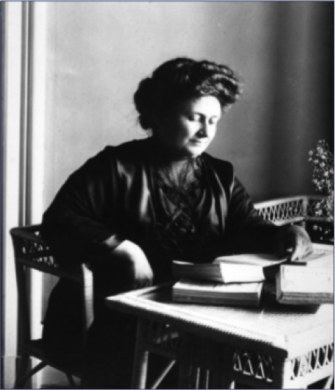

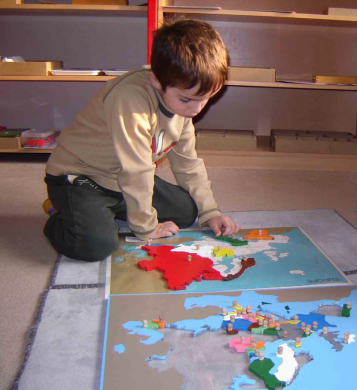
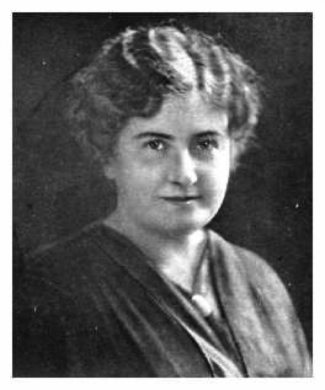
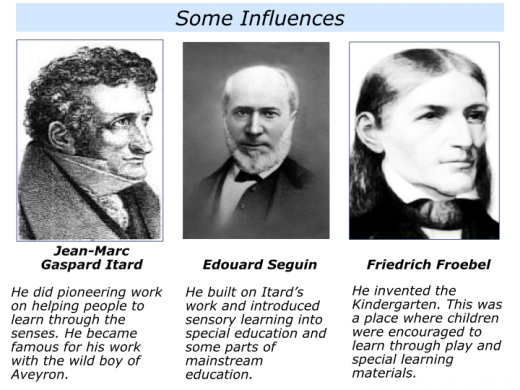


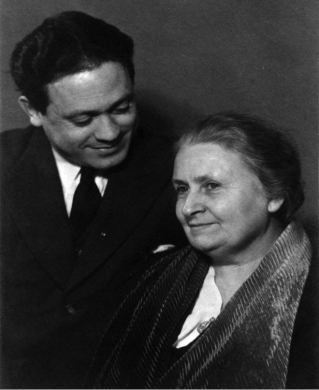

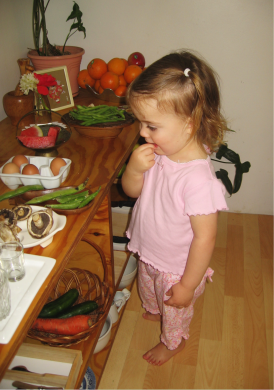
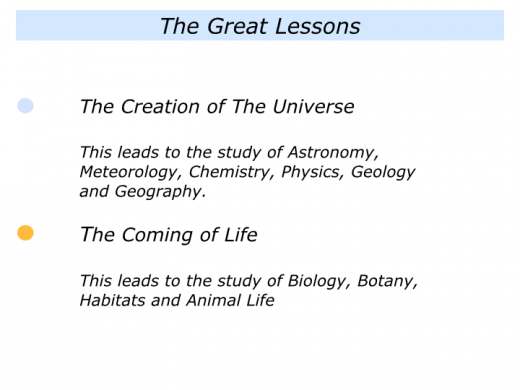


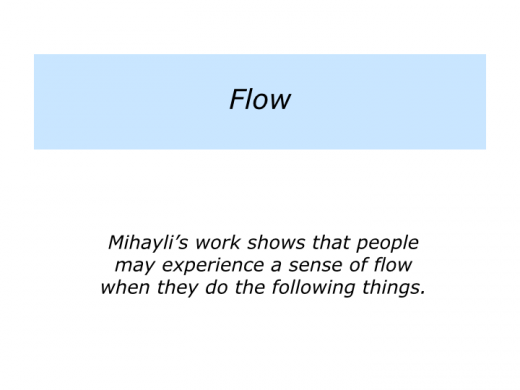
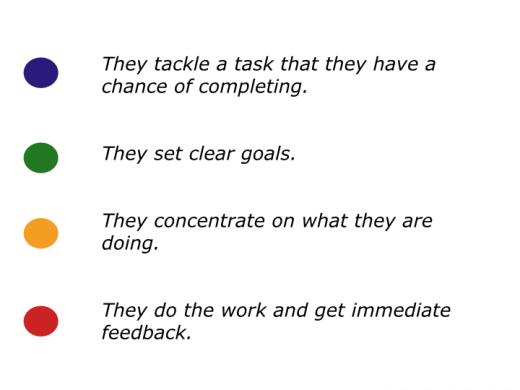
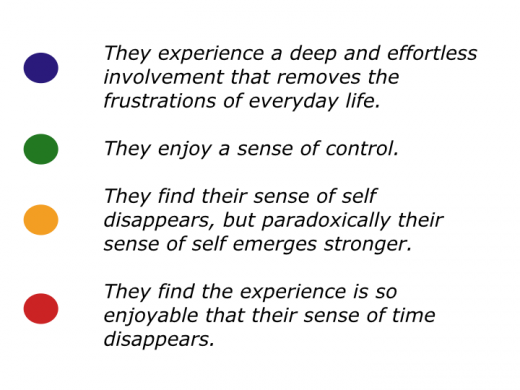






[…] Maria Montessori […]